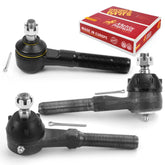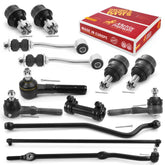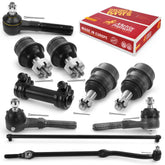The Effect of Speed Bumps on Your Car's Suspension
What are Speed Bumps?
Speed bumps, speed humps, or traffic calming devices are raised structures on roadways to regulate and reduce vehicle speed. They are typically found in residential areas, school zones, parking lots, and other locations where traffic calming measures are necessary. Speed bumps vary in design, size, and material composition, and their impact on vehicles largely depends on these factors.
Speed bumps typically consist of a rounded mound or series of raised sections across the road, usually made of asphalt or concrete. They are generally between 3 to 4 inches (7.5 to 10 cm) in height and 1 to 3 feet (0.3 to 0.9 meters) in width. The distance between the bumps can also vary, depending on the desired speed reduction.

Suspension System Overview
To understand the impact of speed bumps, it is crucial to grasp the basics of a typical suspension system. A car's suspension comprises several components: springs, shock absorbers, struts, control arms, bushings, and anti-roll bars. Together, these components provide a smooth and controlled ride while ensuring optimal tire contact with the road surface. The system's primary function is to absorb road imperfections and dampen vibrations, thus protecting the vehicle and its occupants from excessive impacts.
Impact of Speed Bumps on Suspension Components:
Vertical Forces and Impact: When encountering a speed bump, your car experiences vertical forces that affect the suspension system. As the wheels hit the bump, the suspension compresses, absorbing the impact. The magnitude of the force depends on various factors, such as the vehicle's speed, the height and shape of the speed bump, and the suspension design.
Shock Absorbers and Struts: Speed bumps can subject these components to significant stress, as they absorb the vertical forces generated when the wheels encounter an obstruction. Frequent encounters with speed bumps can accelerate wear and tear, reducing shock absorption capabilities, compromising ride quality, and increasing vibrations.
Springs: The springs in your car's suspension system are crucial in absorbing and distributing the impact energy from speed bumps. However, repeated compression and extension caused by speed bumps can fatigue the springs over time, resulting in sagging, reduced ride height, and compromised handling.
Control Arms and Bushings: Speed bumps put additional strain on control arms and bushings, which connect the suspension components to the chassis. Excessive stress can lead to accelerated wear and even failure of these components, resulting in compromised stability, imprecise steering, and increased noise.
Anti-Roll Bars (Sway Bars): Speed bumps can cause the vehicle to tilt and sway, exerting lateral forces on the anti-roll bars. Over time, this can lead to wear and damage, reducing their effectiveness in controlling body roll during cornering.
Impact on Tires and Wheels: Speed bumps can cause the tires to lose contact with the road momentarily, leading to a loss of traction and decreased braking effectiveness. Additionally, repeated impacts can cause the wheels to become misaligned or unbalanced, leading to uneven tire wear, vibrations, and reduced handling performance.
How Can You Minimize the Impact of Speed Bumps?
Choosing the Right Suspension Components: Investing in high-quality shock absorbers, struts, springs, control arms, and bushings is essential to withstand the rigors of speed bumps. These components should be selected based on the vehicle's specifications and driving conditions. You can view Metrix Premium Suspension Catalog here to find premium quality Control Arms, Ball joints, Bushings, Sway Bar Links, and more for your car.
Suspension Tuning: In some cases, adjusting the suspension settings, such as increasing the spring rate or upgrading to stiffer components, can help minimize the impact of speed bumps. However, this should be done carefully to balance comfort and performance.
Proper Driving Techniques: Adopting appropriate driving techniques, such as slowing down before encountering speed bumps, can reduce the stress on suspension components. Additionally, avoiding abrupt acceleration and braking can help preserve the integrity of the system.
Regular Maintenance and Inspections
Regular maintenance and inspections are essential to ensure optimal performance and longevity of the suspension system. This includes periodic checks for wear, lubrication, and proper alignment. Any signs of damage or wear should be addressed promptly by replacing worn-out components with high-quality replacements.
Speed bumps can significantly impact your car's suspension system, leading to accelerated wear, compromised ride quality, and potential damage to various components. By understanding the implications and taking proactive measures, you can ensure a smooth, comfortable, and safe driving experience while preserving the integrity of your vehicle's suspension system.
When it comes to addressing your suspension needs, it is crucial to invest in premium chassis parts that can enhance the performance and durability of your vehicle. The quality of the components you choose can have a significant impact on your driving experience, handling, and overall safety.
By choosing Metrix Premium Chassis Parts for your suspension needs, you can have confidence in the quality and performance of your vehicle's suspension system.
Remember, when it comes to your safety and driving satisfaction, compromising on quality is not an option. Consider Metrix Premium Chassis Parts for your suspension needs, and take your driving experience to the next level!









